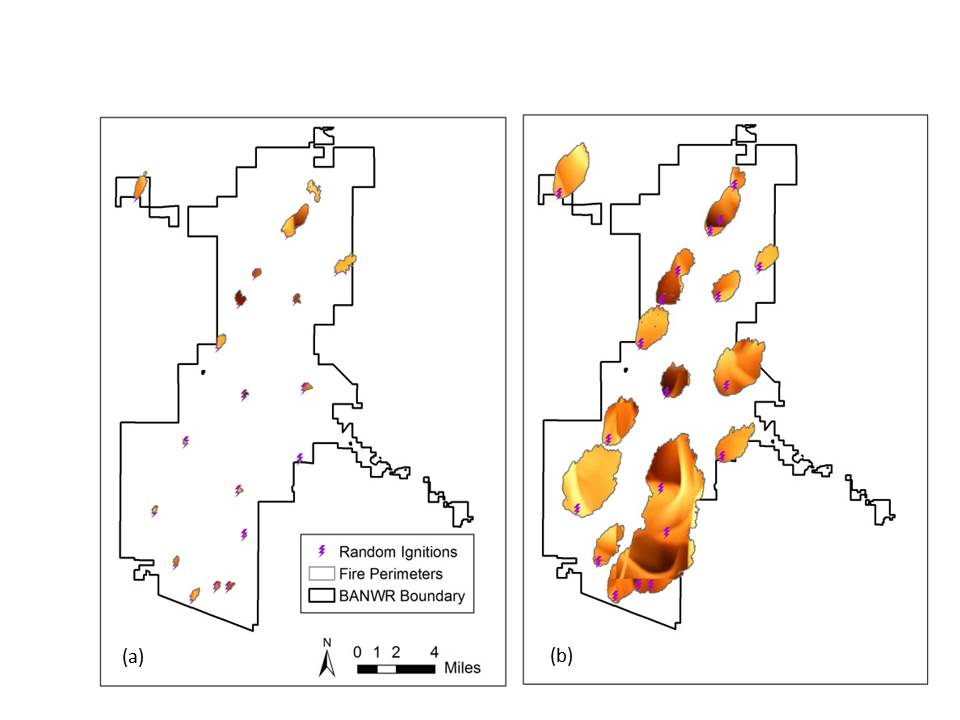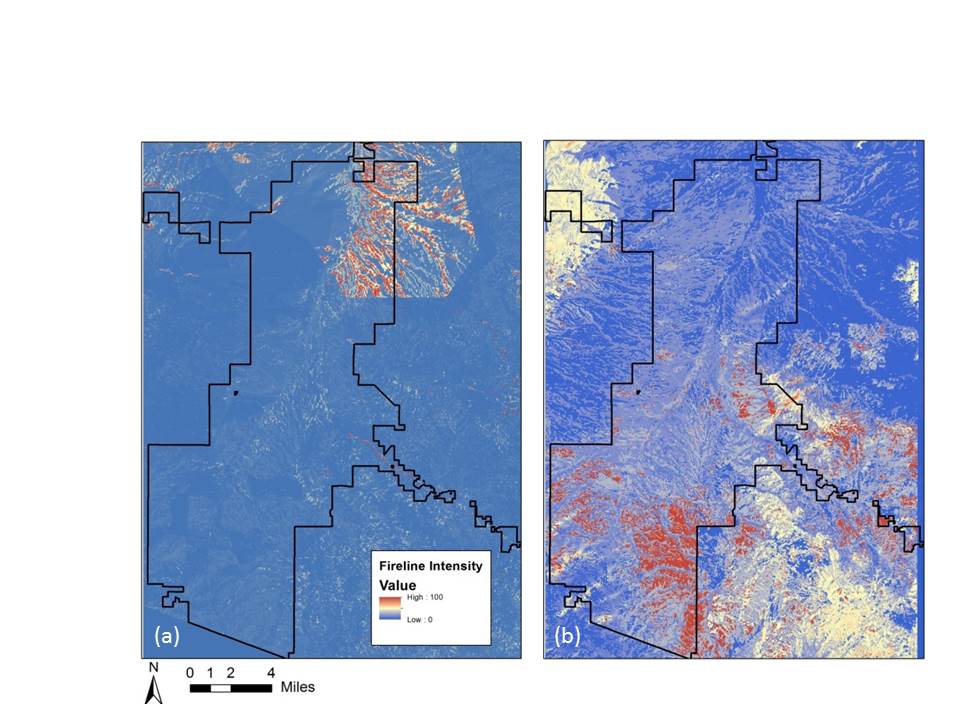Wildland fires are an important natural disturbance in semi-desert grasslands, but they can pose a threat to natural resource values and private property. Predicting the spread and intensity of fires allows for the prioritization of areas to mitigate fuels and reduce fire hazard. Fire behavior models for grasslands fundamentally depend on topography, fire weather, and presumed fuel-bed conditions. National fuel model data products are available through Landscape Fire and Resource Management Planning Tools (LANDFIRE). LANDFIRE fuel models for the semi-desert grasslands in Arizona typically assume low flammability of desert grasslands because of low to moderate fuel loads and connectivity. However, invasive plant dominance and increased fuel load on more productive sites suggest that alternative fuel models or adjustments are needed to accurately estimate grassland fire behavior over large landscapes. For this study, FWS scientists compared fire behavior model outputs developed from a conventional LANDFIRE standard fuel model with custom-derived fuel models developed from extensive vegetation plots, fine-fuel data, and high-resolution satellite data in Buenos Aires National Wildlife Refuge (BANWR) in southern Arizona.
To develop a custom fuel model, ground-based surveys were conducted to collect plant species composition, structure, and herbaceous plant biomass (fine fuels) for 446, 20-m x 50-m vegetation plots between 2012 and 2015. These data were coupled with seasonal WorldView-3 imagery (2015) and Landsat 8 imagery (2014, 2015) from September (peak green) and November (senesced/dormant vegetation) in Random Forest (RF) and regression tree classifications to develop inputs needed for fuel models, including a plant lifeform-based land cover map, fine fuels biomass (kg/ha), and percent tree, woody, herbaceous, and bare-ground cover. Finally, the custom fuel model was created using the derived geospatial products in a multiple criteria evaluation, which assigns fire characteristics to a specific fuel type as part of the 40 Scott and Burgan Fire Behavior Fuel Model types.
The figure shows a comparison of fire risk using LANDFIRE 2014 fuel models and the derived 2015 custom fuel model for 20 random ignitions throughout the refuge. The custom-derived 2015 model predicts a more continuous fuel bed with higher biomass leading to a much higher risk of fire spread and hazard with 1,766 ha burning versus 61 ha (p0.001). Fuel intensity was also higher using the 2015 custom fuel model. After comparing predicted fire intensity to fire severity classes to six fires occurring on the refuge in the last 10 years, the magnitude of severity of burn for the custom-derived 2015 fuel model more closely matched what is detected in the normalized burn ratio of prefire and postfire imagery. Fire behavior estimated from custom-derived models also better represented conventional knowledge of fire activity on the refuge during 90th percentile fire weather conditions. Wildfires commonly burn between several hundred to a few thousand hectares during May and July each year. This indicates that the FWS custom model provides a more accurate estimate for semi-desert fuel types and can be used by fire managers to more strategically target fuel reduction efforts to help mitigate hazardous conditions. 
Comparison of fire hazard by running 20 random ignitions in FLAMAP software and comparing resulting fire perimeters. The custom 2015 (b) model shows a dramatic increase in fire hazard.

Standardized map of fireline intensity derived from LANDFIRE products (a) and the custom-derived fuel model (b).

